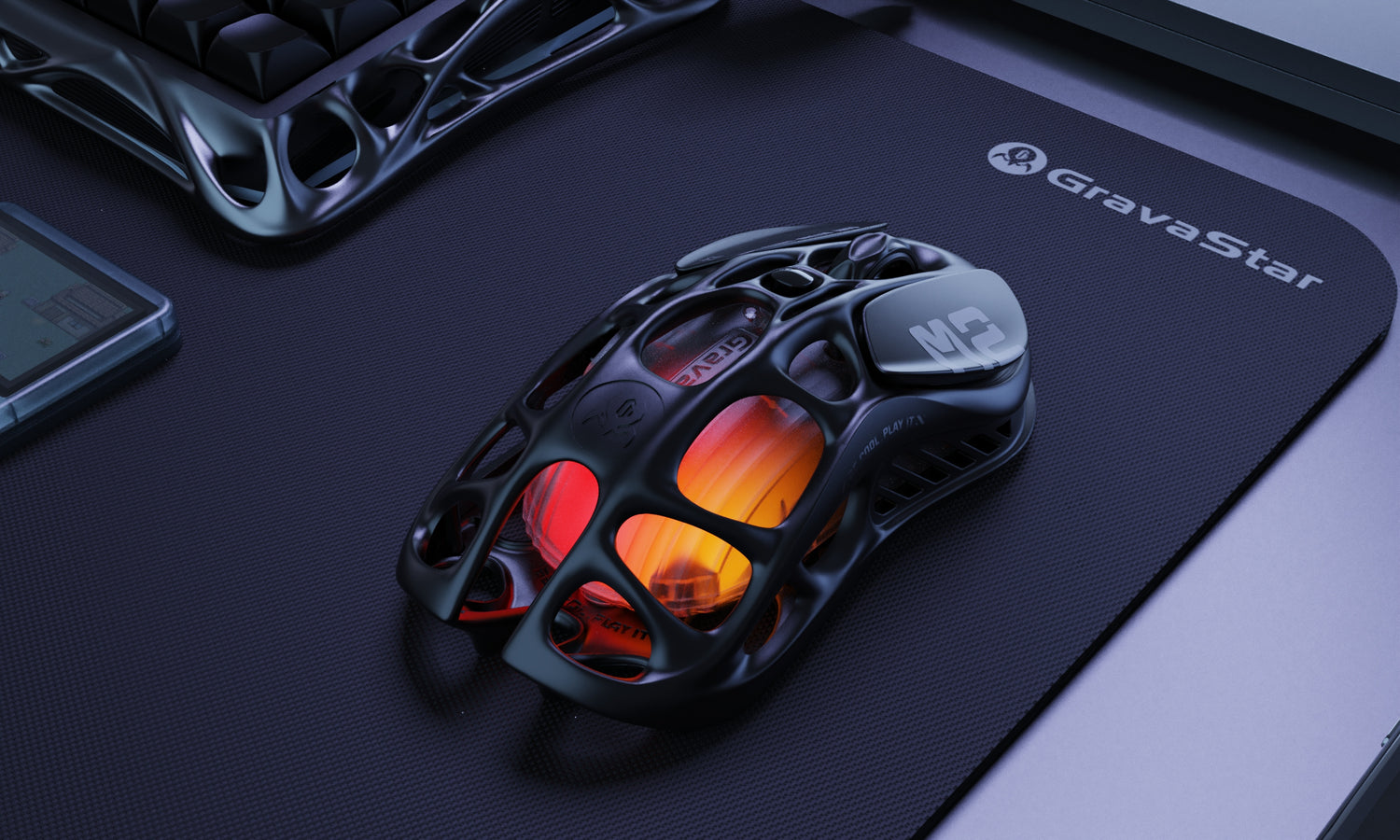|
Feature |
Regular Mouse |
|
|
Ergonomic Design |
Tailored for comfort, fits snugly in hand. |
More utilitarian and less focused on prolonged use. |
|
Sensor Accuracy |
High DPI for precision and quick movements. |
Lower DPI, adequate for everyday tasks. |
|
Customization |
Programmable buttons, high personalization. |
Basic functionality, limited customization. |
|
Durability |
Built for endurance, high-quality materials. |
Durable but less focused on intense use. |
|
Response Time |
Minimal latency, instantaneous reaction. |
Responsive, but not optimized for speed. |
|
Lighting/Aesthetics |
Customizable RGB lighting and stylish designs. |
More practical design, less focus on aesthetics. |
|
Cost |
Generally higher-priced ($50-$200). |
More affordable ($10-$40). |
|
Weight Adjustment |
Adjustable weights for personalized comfort. |
Standard weight, no adjustment options. |
|
Software Support |
Advanced software for setting customization. |
Basic, operates with standard OS settings. |
In the world of computer peripherals, the mouse is more than just a basic tool; it's a reflection of functionality and performance. The differences between a gaming mouse and a regular mouse showcase this distinction vividly. Gaming mice, designed with precision, customization, and durability in mind, cater to the intense demands of gamers. Regular mice, on the other hand, focus on providing the essential functionality for everyday computer tasks. This article explores these differences, highlighting how they affect user experience in both gaming and daily computing scenarios.
Ergonomic Design
The ergonomic design of a mouse is not just a matter of form, but a critical aspect that defines its function. Gaming mice, with their meticulous craftsmanship, are a testament to this principle. These devices are engineered with an acute understanding of the gamer's need for comfort during marathon gaming sessions. The contours, weight, and overall structure of gaming mice are tailored to fit snugly in the user's hand, reducing fatigue and preventing the strain that often accompanies long hours of intense play. The materials used are chosen for their durability and tactile comfort, ensuring that the mouse feels like an extension of the gamer's hand.
In stark contrast, regular mice often adhere to a more utilitarian design philosophy. While they are certainly capable and adequate for day to day tasks like browsing the internet or working on office applications, they lack the specialized ergonomics of gaming mice. These standard mice may not provide the same level of hand support or comfort, making them less suited for prolonged use. Their simpler design, while efficient for short term use, might lead to discomfort or inefficiency during extended periods of interaction.
Sensor Accuracy
The sensor of a mouse is akin to its heartbeat, dictating its responsiveness and accuracy. In gaming mice, the sensor is a marvel of technology, boasting high sensitivity and responsiveness. Measured in dots per inch (DPI), these sensors offer a wide range of sensitivity settings, allowing gamers to fine tune their mice for razor sharp precision. This feature is indispensable in gaming, where a fraction of a second or a millimeter can spell the difference between triumph and defeat. The high DPI settings enable quick, fluid movements, allowing gamers to respond instantaneously to fast-paced scenarios.
Conversely, regular mice, while precise in their own right, typically have lower DPI settings. This reflects their role in more everyday computing tasks, where ultra high sensitivity is not a necessity. They are designed to handle daily computing tasks with efficiency and reliability, providing a level of precision that is more than adequate for activities like text editing, web browsing, or graphic design work.
Customization
Customization stands as one of the most striking features that set gaming mice apart from their regular counterparts. Gaming mice often feature a range of programmable buttons, each capable of being assigned a unique function or macro. This level of customization enables gamers to adapt their mouse to fit their gaming style and preferences, effectively turning it into a multi tool that can perform a variety of actions at the click of a button. Whether it's executing complex in game commands or streamlining actions for efficiency, these programmable buttons transform the gaming experience into something uniquely tailored to each gamer.
On the other hand, regular mice typically forgo this level of personalization in favor of a more straightforward approach. They are designed to perform the fundamental tasks of clicking, scrolling, and navigating with ease and reliability. While this makes them less versatile than gaming mice, it also renders them more accessible and user friendly for the average computer user, who may not require the complex functionalities offered by their gaming-oriented counterparts.
Durability
Durability in gaming mice is not merely a feature; it's a fundamental requirement. Recognizing the demanding nature of gaming, these mice are engineered to endure. Every component, from the outer shell to the internal mechanics, is chosen for its resilience. High quality materials such as reinforced plastics and metals are often employed, providing a sturdy framework that can withstand the vigor of rapid, forceful clicks and movements. The switches under each button are designed for a high number of clicks, ensuring they remain responsive and reliable over time, even under the strain of intense gaming sessions.
In contrast, regular mice are built for a different kind of durability. While they are certainly capable of lasting through daily use, they are not typically subjected to the same intense, repetitive actions as gaming mice. As such, their build quality, while solid, may not include the same level of reinforced materials or heavy duty switch mechanisms. They are designed to be reliable and efficient for everyday tasks but may not hold up as well under the extreme conditions often encountered in gaming.
Response Time
Response time in gaming mice is a critical aspect that can have a profound impact on gaming performance. These devices are engineered for minimal latency, meaning the time from clicking a button to the action being executed on screen is incredibly short. This swift response is crucial in gaming, where reactions are measured in milliseconds and can be the deciding factor between winning and losing. Gaming mice use advanced optical or laser sensors coupled with optimized firmware to ensure that every movement and click is registered with almost no delay.
On the other hand, regular mice, while certainly responsive, do not prioritize this ultra fast response time. For everyday computing tasks, a slight delay in response time is usually imperceptible and rarely impacts functionality. Therefore, standard mice focus more on accuracy and reliability over split second response, which aligns well with their intended use in more routine computing activities.
Lighting and Aesthetics
Gaming mice often transcend their functional role, becoming a visual statement in a gamer's setup. Many models feature customizable RGB lighting, allowing users to choose colors and effects that match their personal style or gaming setup. This aesthetic customization is not just about looks; it often serves as a form of personal expression, reflecting the gamer's personality and preferences.
Regular mice, in comparison, typically prioritize practicality over style. Their design is often more understated, focusing on ergonomics and functionality rather than visual flair. While they may come in various colors or with some design elements, they rarely offer the same level of customization as gaming mice. This difference in design philosophy highlights the distinct user bases of these two types of mice: one geared towards a vibrant, personalized gaming experience and the other towards efficiency and simplicity in everyday computing tasks.
Cost
Gaming mice are priced higher, reflecting their advanced features and superior build quality. Prices typically range from $50 to $200, depending on the brand and features. This cost is suitable for those seeking high performance, durability, and customization in gaming. In contrast, regular mice, catering to basic computing, are priced from $10 to $40, making them more affordable and suitable for everyday use. This pricing difference clearly distinguishes the target audience and purpose of each type of mouse.
Weight Adjustment
Weight adjustment in gaming mice is a feature that underscores the level of personalization these devices offer. Many gaming mice come with adjustable weights, allowing users to modify the heft and balance of the mouse to suit their comfort and handling preferences. This customization can significantly affect a user's control and precision, particularly in scenarios where every small movement matters. The ability to tailor the weight of the mouse to individual preferences adds another layer of comfort, ensuring that the device feels just right in the user's hand.
On the other hand, this level of granular customization is typically not available in regular mice. These devices are designed with a one size fits all approach, providing a standard weight and balance that suits general use. While this means less flexibility in terms of personalization, it also simplifies the design and use of the mouse, making it more straightforward and user friendly for everyday tasks.
Software Support
Software support is a significant aspect that enhances the functionality of gaming mice. This support usually comes in the form of dedicated applications or drivers that allow users to configure various aspects of the mouse, such as DPI settings, button assignments, and even intricate lighting effects. This software enables users to fine tune their mice to their exact preferences, optimizing their gaming experience. It also allows for profiles to be created for different games or applications, ensuring that the mouse behaves exactly as needed for any given scenario.
In contrast, regular mice typically do not come with such extensive software support. They are designed to work out of the box with the basic settings provided by the operating system. While this means less customization, it also ensures ease of use, as users do not need to navigate additional software to use their mouse effectively. For everyday computing tasks, the simplicity and straightforwardness of a regular mouse can be more appealing than the complex customization options of a gaming mouse.
The Bottom Line
In summary, whether you're a gamer seeking precision and customization or a casual user needing basic functionality, understanding these differences helps in selecting the right mouse. Gaming mice offer advanced features for an enhanced experience, while regular mice provide simplicity and affordability for everyday tasks.
FAQs
- Can a normal mouse be used for gaming?
Yes, a normal mouse can be used for gaming, but it may not offer the same precision, speed, and customization options as a gaming mouse.
- Can I use a gaming mouse as a regular mouse?
Yes, you can use a gaming mouse as a regular mouse. It will work well for everyday tasks and often provides additional comfort and precision.
- Do gaming mice make a difference?
Yes, gaming mice make a difference, especially in precision, speed, comfort, and customization, which can enhance the gaming experience significantly.







Leave a comment
This site is protected by hCaptcha and the hCaptcha Privacy Policy and Terms of Service apply.